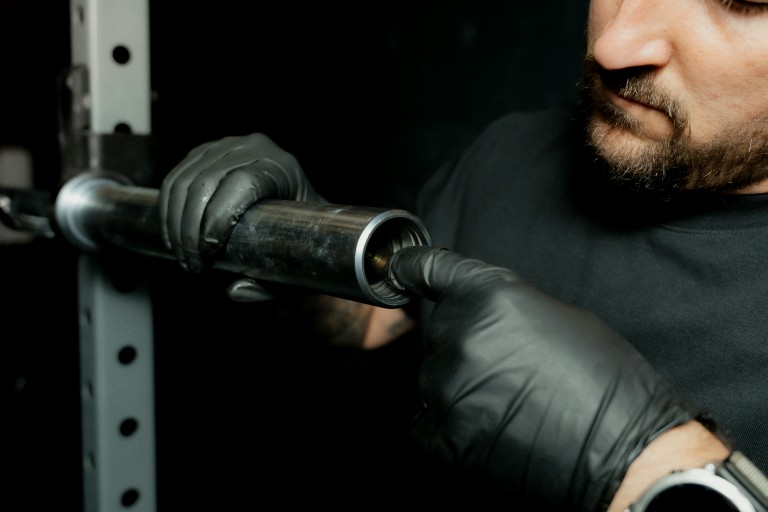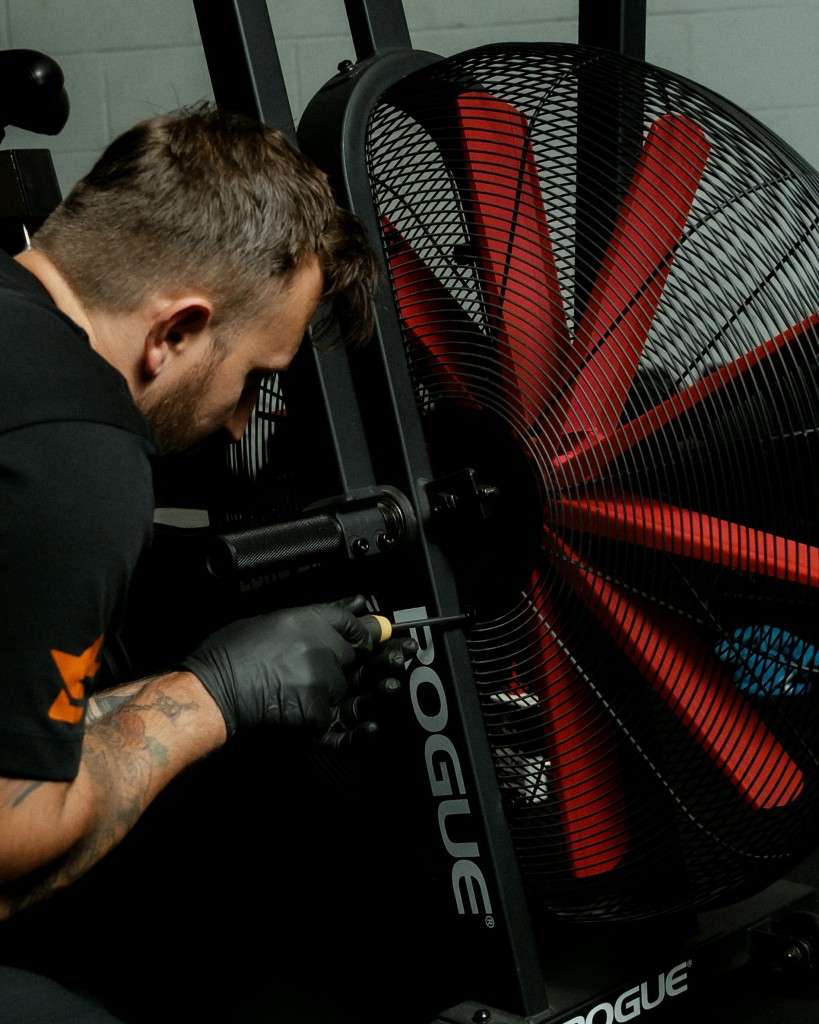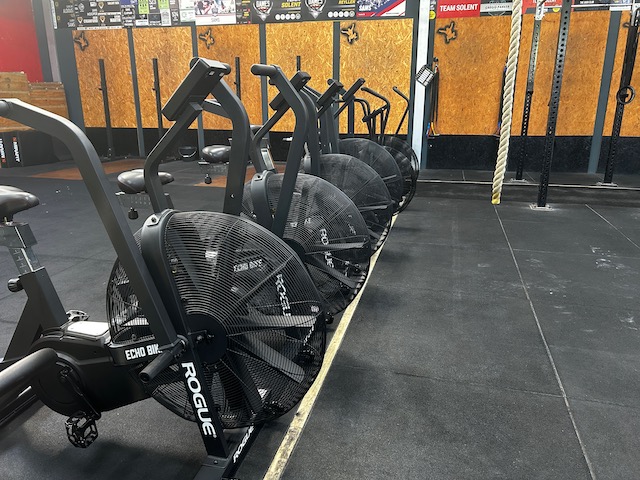
22nd Dec 2024

This case study outlines the ongoing maintenance and repair work performed on a fleet of Echo bikes that are in regular use at CrossFit Shapesmiths. Even though the bikes are built to last, excessive usage can cause wear and tear. The maintenance efforts described herein focus on addressing common issues, repairing damaged components, and ensuring the bikes are in optimal condition for safety and performance.
The maintenance needs of the Echo bikes revolved around both functional and cosmetic repairs. The most common issues across the fleet included worn seats, loose pedal arms, damaged stabilising feet, and surface rust. While some issues were purely cosmetic, such as rust and damaged fan covers, others required more substantial repairs like replacing seat posts, crank bearings, and pedal components. Regular servicing of the bikes ensured they remained safe for use and minimised downtime.
Echo Bike Fleet Issues and Maintenance Actions
Echo #1 required the replacement of the drive belt, which had shown signs of wear. Two stabilising feet were also broken, and while there was some surface rust, it did not affect the bike’s performance. The seat was replaced, and a new front seat post cover was installed to improve comfort and aesthetics. Similarly, Echo #2 had a loose left pedal, which was tightened. Despite surface rust being present, it did not hinder performance, and the seat was replaced to ensure user comfort.
Echo #3 had a damaged right-side handle, although it was a cosmetic issue and did not affect performance. The stabilising foot needed replacement, and the seat had become worn, so it was also replaced. The front seat post cover was missing and had to be replaced to maintain structural integrity. Moving on to Echo #4, the left-side handle was damaged, but like in the previous case, it was a non-functional issue. The left pedal arm was loose, requiring tightening, and several parts needed replacement, including the front fan cover, seat post, and front seat post cover. After replacing the necessary components, the bike was fully restored.
For Echo #5, the primary issues were related to the fan and seat post covers. The front fan cover was cracked and needed replacement, and the front seat post cover was missing. The seat was replaced, and three levelling feet had to be replaced to ensure proper balance and performance. Similarly, Echo #6 required a more extensive overhaul. The rear foot cross-section, two stabilising feet, and the seat pull knob needed replacement. The left-side pedal arm was tightened, and both the front fan grill and right-side arm required replacement. These repairs were carried out to ensure safety and functionality.
Echo #7 faced issues with a damaged rear foot cross-section and broken seat pull knob. The crank bearings had worn out, and the seat post was also loose and required replacement. All of these components were replaced, restoring the bike to full working order. In Echo #8, the seat post had become damaged, and the seat had worn down, so both components were replaced to ensure continued comfort and functionality for users.
Echo #9 had a damaged rear foot cross-section, a worn seat, and a broken levelling foot. Additionally, the front fan cover needed replacement. Repairs included replacing the rear foot cross-section, seat, levelling foot, and ordering a new fan cover. Echo #10 also required several fixes: the seat post front cover was missing, the rear foot cross-section was cracked, and the left pedal needed tightening. The seat post itself was loose and required replacement. After replacing these parts and tightening the pedal, the bike was restored to optimal performance.
Echo #11 had a similar set of issues, including a cracked rear foot cross-section, a worn-out seat, and a loose seat post. The front fan cover also needed to be replaced. Repairs were carried out efficiently, with all damaged components replaced to ensure the bike was fully functional. Echo #12, on the other hand, had a relatively simple repair; the front foot cross-section turf tiers were replaced, and the seat was also replaced to maintain user comfort.
In Echo #13, multiple issues were identified, including a broken seat pull knob, one levelling foot that needed replacement, and a worn-out seat. The bike also required a new front seat post cover, a front fan grill, and new crank bearings. After replacing these components, the bike was brought back to full operational capacity. Echo #14 had three levelling feet that needed replacement, along with a worn seat. Additionally, the front seat post cover was missing, and the left-side pedal arm needed tightening. After these parts were replaced and adjusted, the bike was ready for use.
Echo #15 had a broken seat, and the left pedal arm was loose. One levelling foot needed to be replaced, and a new front fan grill was ordered to replace the damaged one. Echo #16 required a seat replacement, and the left pedal arm was tightened to ensure safety. While these repairs were relatively simple, they were crucial for maintaining the bike’s performance.
Echo #17 had more significant issues, including a broken stabilising foot, worn seat, and loose left pedal arm. The rear foot cross-section was damaged and needed replacement, and the bike required both a new front fan grill and a seat post front cover. These parts were replaced, and the bike was fully restored to its previous condition. Finally, Echo #18 had several levelling feet that needed replacing, a worn seat, and a missing front seat post cover. Additionally, the left pedal cover was damaged and needed replacement. After completing these repairs, the bike was returned to service.
Key Insights and Common Trends
Across the fleet, several recurring issues were identified. The seat was the most frequently replaced component due to wear and tear from prolonged use. Worn seats led to discomfort, making replacements a top priority. Similarly, stabilising feet were commonly damaged or worn out due to frequent use, leading to frequent replacements. Pedal arm issues, specifically loosening pedals and pedal arms, were another common concern. These parts needed regular tightening to ensure user safety and comfort.
Surface rust appeared on multiple bikes but did not significantly affect their performance. However, it required attention to prevent long-term corrosion. Fan covers and grills were also frequently damaged, likely due to environmental factors such as dust and debris. Foot cross-section damage, both rear and front, was a consistent issue, often requiring replacement after prolonged use.

Conclusion and Recommendations
The maintenance efforts outlined in this case study emphasise the importance of regular inspections and prompt repairs to ensure that bikes in a fleet remain safe, functional, and comfortable for users. Routine attention to components like seats, stabilising feet, pedal arms, and fan covers can significantly extend the life of the bikes and minimise downtime.
It is recommended that regular inspections focus on high-use and high-wear components, such as pedals, seats, and stabilising feet, to catch issues early. Tightening of pedal arms should be included in routine maintenance checks, and replacement parts like foot cross-sections, fan covers, and seat posts should be kept in stock for quick fixes. Addressing minor cosmetic issues, such as surface rust, can prevent long-term damage and keep the bikes looking presentable.
By maintaining a proactive maintenance schedule and having the necessary replacement parts available, the fleet will continue to operate smoothly, providing a safe and comfortable experience for users.